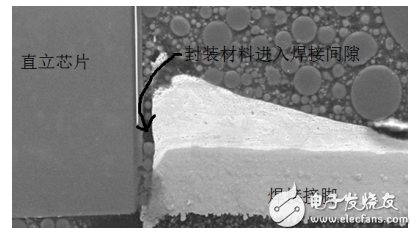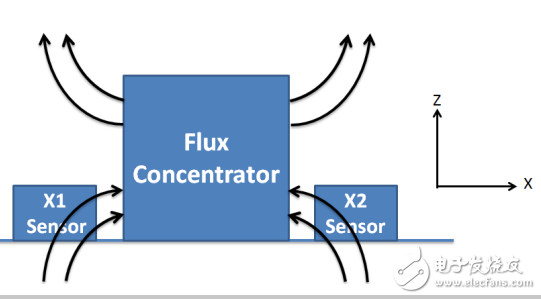Three-axis magnetic sensors, also known as electronic compasses, are widely used and applied in drones, smart watches, and navigation devices. In view of the need to detect changes in the motion of the object, the three-axis magnetic sensor carries a vital absolute pointing function, escorting diversified functions such as stable flight and auxiliary navigation. As such, the reliability of the three-axis magnetic sensor is the cornerstone of the stable operation of these devices.
However, the three-axis magnetic sensors commonly used in the general market today use an upright Z-axis with a horizontal XY-axis sensing structure. The sensor is packaged in a multi-chip package that uses a Epoxy package and soldering method to attach a horizontal, vertical sensor, and a magnetic field level sensor that senses the X and Y axes to the gold or wire. The vertical sensor is responsible for sensing the magnitude of the magnetic field in the Z-axis. The upright Z-axis sensor is simple in design because of its intuitive structure. However, since the vertical Z-axis structure is structurally weak due to the complexity of the package, for example, due to thermal expansion and contraction, the line breaks or the structural change of the joint causes some common drawbacks of use and after-sales.

Vertical Z-axis sensors are prone to line breakage, encapsulation of materials into solder joints, etc.
For manufacturers and users of geomagnetic sensors using vertical Z-axis structures, the biggest concern is that they are relatively stable and poor. For example, in the production process, rework or small-scale manual production requires the use of hot air gun welding, which is prone to sensor damage caused by high temperature during the welding process, such as broken lines and extruded materials into the solder joints. In addition to direct damage, the high-temperature welding process may also cause the sensor values ​​to deviate. Therefore, in the mass production process, defective products of 10% or higher often occur, requiring rework and rework, which undoubtedly increases the production cost and time cost of the manufacturer. . The failure of the vertical Z-axis sensor structure is not uncommon, and the sensor is only able to support Reflow two or three times, so for the chip user, the foreseeable use risk exists.
In addition, during the user's use, since the vertical Z-axis sensor is sensitive to the ambient temperature, when encountering extreme weather or large temperature changes, it is easy for the sensor to malfunction from time to time, resulting in malfunction or even crash of the drone. This will also increase the cost of after-sales maintenance for users.
So, how to solve the above problems and create a truly durable three-axis magnetic sensor product? Recently, iSentek, the world's leading magnetic sensor company, has given the industry a new idea.

iSentek Aisheng Technology's three-axis magnetic sensor uses soft magnetic principle to induce X, Y and Z magnetic fields on the same sensor.
It is reported that iSentek's three-axis magnetic sensor products do not use the common vertical sensor structure to sense the Z-axis magnetic field, but instead use the advanced soft magnetic principle to steer the original vertical Z-axis magnetic force, X, Y The magnetic force of the three dimensions of Z is guided to the same plane sensor for induction, and the magnetic field of the position of the three-axis magnetic sensor is calculated mathematically. This method ingeniously avoids the risk of line breakage, the extrusion of the packaging material into the solder joint, and the metal stripping of the solder ball after the vertical Z-axis sensor is soldered.
Due to the high level of integration of iSentek's three-axis magnetic sensor, it is more ideal for temperature and humidity resistance. For system product manufacturers, there is no need to worry about component processing problems caused by different temperature environments, which can significantly increase the yield of production. For the user, there is no need to worry too much about the adverse effects of temperature and humidity changes in the flight on the drone or navigation, pointing, and control, and it can also reduce the problem of using the product in the extreme temperature environment after sale.
With the rise of the Internet of Things, the application of motion sensing is extremely promising. As a component of motion sensing core, the three-axis magnetic sensor solves the problems of stability and reliability, and solves the proofing yield, mass production yield, rework success rate, and after-sales fault of UAV and navigation equipment system manufacturers. Rate and other issues.
The QNP Steam Turbines` capacity mainly covers 200MW and below. Our high efficiency steam turbines are flexible and diverse in structure and layout so as to meet various requirement of our users. Aiming at the global leading equipment manufacturing enterprise, our design and R&D standards are higher than GB standard and in the same league with European and American energy equipment manufacturers.
high efficiency turbine,high speed turbine, steam turbines
Shandong Qingneng Power Co., Ltd. , https://www.steamturbine.be